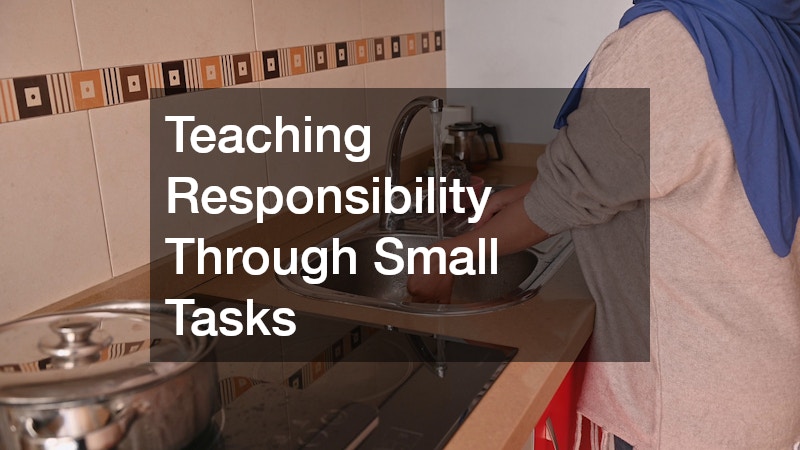In today’s fast-paced world, it’s easy to think that family happiness depends on grand vacations, big homes, or picture-perfect moments. But in reality, it’s the small things — the daily habits, thoughtful gestures, and cozy environments — that bring families closer together. Whether it’s a five-minute conversation before school or sharing dinner at the kitchen table, these seemingly minor actions create lasting memories and build strong emotional bonds.
For growing families, these moments matter more than ever. Life becomes busier as children get older, routines expand, and new responsibilities appear. But amid the busyness, the quiet details — a warm home, shared laughter, and supportive parenting — are what shape lasting connections.
The little things also extend beyond daily interactions. The environment where families live, the way they handle challenges, and the time they invest in one another all add up to a nurturing lifestyle. Whether it’s rearranging a living room to make more play space or investing in quality childcare, these small changes can make family life run more smoothly.

Building Connection Through Everyday Routines
For growing families, routines are more than just schedules — they’re anchors. They bring a sense of order to days that might otherwise feel chaotic. The rhythm of morning routines, school drop-offs, mealtimes, and bedtime rituals provides structure that helps everyone feel secure.
Encouraging Conversation and Openness
Communication doesn’t have to be a long family meeting. Sometimes it’s a car ride to school, folding laundry together, or chatting while making dinner. These are the moments when real connections happen. Asking about your child’s day, celebrating small wins, or even listening to their frustrations builds trust and understanding.
Parents who encourage conversation teach kids that their thoughts and feelings matter. This approach also mirrors what educators emphasize in private elementary schools, where open dialogue and supportive feedback are part of nurturing social-emotional development.
In busy homes, it’s easy to let screens or schedules take over, but carving out time to talk — even ten minutes before bedtime — reminds everyone that family comes first. For growing families, consistency in these small interactions helps children feel loved and grounded, even as they grow more independent.
Creating a Supportive Environment at Home
Home is the backdrop of every family’s story. It’s where laughter echoes, milestones are celebrated, and memories are made. But beyond nostalgia, the home’s layout and atmosphere play an important role in emotional well-being.
For growing families, creating functional, cozy spaces is an ongoing process. Rearranging furniture, adding storage, or redesigning a play area can make everyday life easier. Sometimes, a small home project — like better lighting, fresh paint, or new shelving — brings renewed energy to the whole household.
Spaces That Encourage Learning and Rest
Children thrive when they have spaces that balance activity and relaxation. A corner with books and soft lighting can spark imagination. A designated homework area teaches focus and responsibility. For toddlers, soft mats, puzzles, and sensory toys can keep them engaged safely. Parents looking for creative activities for toddlers often find that simple play setups — coloring stations, reading nooks, or outdoor sensory tables — can be both educational and fun.
Improving a home doesn’t have to mean large-scale construction. Simple fixes like repairing leaks or installing better insulation can make a big difference. Partnering with reliable roofing contractors can help ensure the house stays dry and secure, while experienced roofers can handle regular maintenance to prevent issues before they start. Similarly, having a trusted plumbing company on call helps families avoid surprise disruptions.
Even home safety measures, such as anti bed bug bed covers, show how small details contribute to comfort and health. These preventive steps reduce worry and promote better rest — something every parent can appreciate.
For growing families, home is both a sanctuary and a classroom. When the environment supports calmness, curiosity, and care, everyone benefits.

Teaching Responsibility Through Small Tasks
A strong family isn’t built overnight — it’s built through cooperation, contribution, and shared effort. Teaching kids responsibility from a young age encourages independence and empathy.
Even the smallest chores, like setting the table or sorting laundry, help children learn accountability. These actions also create opportunities for teamwork. Parents model the value of consistency by praising effort rather than perfection.
Building Skills That Last a Lifetime
When children participate in daily routines, they develop life skills naturally. They learn patience from waiting their turn, perseverance from cleaning up after themselves, and kindness from helping siblings.
The same principle applies outside the home. Many pediatric professional experts emphasize that allowing children to participate in manageable household responsibilities boosts confidence and social skills. Schools also reinforce these lessons — for instance, private elementary schools and prep schools often include age-appropriate tasks and peer activities that promote independence and teamwork.
By blending home structure with educational support, growing families can raise children who understand that every action — no matter how small — contributes to the whole.
Prioritizing Quality Time Over Quantity
Time is one of the most valuable gifts a family can share. However, it’s not about spending more time together; it’s about making the most of the time you have.
For growing families, balancing work, school, and household responsibilities can feel overwhelming. Yet, small moments — a quick chat during breakfast, a shared walk after dinner, or weekend pancake mornings — build emotional closeness that lasts far longer than elaborate outings.
Turning Simple Moments Into Lasting Traditions
Traditions don’t need to be extravagant. They can be as simple as movie night, bedtime stories, or a Sunday family brunch. These repeated acts create a sense of rhythm and security. Over time, these traditions become cherished family memories.
Parents can also integrate educational moments into quality time. Attending school events, helping with projects, or visiting local museums show children that learning happens everywhere. The benefits of prep schools, for example, often highlight the importance of extending learning beyond the classroom — something families can mirror at home by nurturing curiosity and exploration.
A comfortable home environment plays a big role here. Adding warmth through thoughtful décor, gentle lighting, or outdoor spaces — such as patios created after professional fence installations — encourages families to spend time together. These areas become backdrops for connection and laughter, helping everyone unwind after a long day.

Supporting Growth Through Encouragement
Encouragement is one of the simplest yet most powerful tools parents have. A few kind words can motivate children to try again, think creatively, and build confidence.
For growing families, fostering a culture of encouragement starts with small actions — celebrating effort, acknowledging progress, and teaching self-compassion. Parents who emphasize growth over perfection create resilient children who feel supported even when they make mistakes.
Bridging Home and Education
Home and school should work hand in hand. Parents can strengthen that bridge by talking to teachers, volunteering for events, and staying involved in their child’s learning journey. Conversations about school help children see education as part of their family’s shared experience.
Families who invest time in communication and an active listening model the importance of lifelong learning. Visiting daycare centers for younger children or exploring different educational options helps parents find environments that align with their family’s values. These small efforts help establish stability and trust during early developmental years.
Encouragement also extends to how parents approach their own growth — by learning new skills, improving their homes, and maintaining a balance between personal and family life.
Improving the Home, Improving the Family Dynamic
A well-kept home doesn’t just look nice — it creates an environment that supports emotional well-being.
When a home feels disorganized or uncomfortable, stress levels rise. But when it’s bright, clean, and welcoming, family members are more likely to connect positively. The environment can either support or strain relationships, and for growing families, this distinction makes all the difference.
The Link Between Comfort and Communication
A home that promotes relaxation helps open communication. Comfortable living areas encourage gathering, while well-lit kitchens become natural conversation hubs. Even outdoor spaces can become places of connection when they’re functional and inviting.
Maintaining your home is another form of caring for your family. Addressing leaks, repainting worn areas, and investing in small upgrades prevent future problems. Partnering with reliable roofing contractors can help ensure your home remains safe through every season. If leaks or humidity cause damage, professional water damage services can restore the space efficiently and prevent long-term issues.
Many growing families also invest in outdoor upgrades, such as patios, fences, and garden spaces. These improvements create opportunities for outdoor play, relaxation, and family gatherings — small touches that elevate the entire home experience.

Finding Joy in the Details
Joy often hides in the smallest details — the sound of laughter during dinner, the smell of cookies baking, the quiet moments before bedtime. These experiences remind families that happiness doesn’t always come from big events.
Growing families benefit from celebrating the ordinary: a child’s first drawing on the fridge, a weekend spent gardening, or a quick game before dinner. When parents appreciate these small wins, children learn gratitude and mindfulness.
The environment plays a part here, too. Comfortable homes with clean, well-organized spaces naturally reduce stress. Even adding fresh flowers or rearranging a play area can improve everyone’s mood.
Families who practice gratitude tend to face challenges with more patience and optimism. The more you recognize and celebrate small victories, the more connected and grounded your family becomes.
Considering Family Growth and Change
As children grow and parents’ lives evolve, families go through constant change. From new babies and career shifts to health challenges or home expansions, each transition requires flexibility and understanding.
For growing families, it’s important to plan for the future. Some families welcome new members through pregnancy, adoption, or surrogacy — and those journeys often come with both emotional and financial planning. Many couples are surprised by the average cost for surrogacy, which can influence long-term budgeting decisions.
Beyond financial adjustments, emotional preparation matters too. Creating a supportive home and flexible routines helps families adapt smoothly as new members arrive or dynamics shift.
The same principle applies when caring for aging parents or making space for multigenerational living. Simple home improvements — like better lighting, wider doorways, or added bathrooms — can make the home safer and more functional for everyone.
Staying Connected as a Family Unit
No matter how much a family grows or changes, staying connected should remain a top priority. Communication, understanding, and shared experiences strengthen relationships and help prevent misunderstandings.
Growing families often juggle busy calendars, but staying intentional about family time ensures emotional bonds remain strong. Technology can help — video calls, family group chats, or shared digital calendars make it easier to stay organized. But nothing replaces in-person connection, laughter, and shared meals.
Spending time outdoors also fosters connection. Gardening, biking, or weekend hikes bring physical activity and fresh air while promoting teamwork. Small home upgrades like patios, fences, or play areas make it easier to enjoy time together right in your backyard.
The most important part is consistency. Even if it’s only 15 minutes a day, that time creates a rhythm of togetherness that carries through all stages of family life.
The Power of Small Things
When we look back on family life, it’s rarely the big vacations or expensive gifts that stand out most. It’s the small, everyday things — the hugs, the laughter, the late-night talks — that linger in our memories.
For growing families, those little things form the foundation of a happy home. It’s about showing up every day, paying attention, and appreciating the moments that make life rich and meaningful. From improving the home environment to fostering learning and communication, small actions add up to big results.
A strong family doesn’t come from perfection; it comes from effort, love, and presence. Whether you’re repairing a fence, choosing a new school, or finding ways to spend more quality time together, remember that every small act contributes to the larger picture of family happiness.
Building a loving home takes time, but it’s worth every bit of energy. For families everywhere — whether just starting out or years into the journey — it’s the little things that truly make all the difference. Start thinking about all of these ways to grow your family this year!


